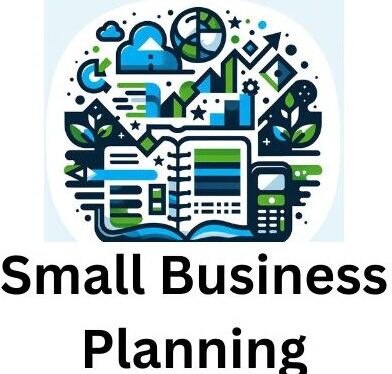Cash flow management can either make or break a small business, no matter how good your products or services are. Even profitable companies sometimes run into trouble just because they don’t keep a close eye on the money moving in and out of their accounts. I’ve seen firsthand how paying attention to cash flow can help a business grow. Ignoring it, though, often leads to unwanted problems. Here, I’ll break down why cash flow management is really important for small enterprises and give some straightforward tips to help keep things running smoothly.

What Is Cash Flow and Why Does It Matter?
Cash flow describes the movement of money—in other words, how much cash is coming into your business compared to how much is going out. This covers payments from customers, expenses like rent, salaries, and bills, plus any other money entering or leaving your accounts. For a small enterprise, positive cash flow means you have enough available cash to pay bills, invest in growth, or cover emergencies without taking on debt.
It can be tempting to focus only on profits, thinking that as long as you’re earning money on paper, things will work out. But profits and cash aren’t the same. Your business might show a profit, but if your customers are slow to pay and your expenses pile up, you could find yourself stuck with more bills than cash in the bank. That’s why clear cash flow management is so important for small businesses. These businesses often have tighter margins and less backup compared to bigger firms, so managing the ins and outs of cash is critical.
Key Reasons Cash Flow Management Is So Important
There are several reasons why keeping tabs on cash flow matters so much for small enterprises:
- Keeping the Lights On: Even short cash shortages can halt operations. Cash flow management helps make sure you can pay your suppliers, employees, and landlords when you need to.
- Avoiding Expensive Debt: Running short on cash usually means turning to loans or credit cards, which come with interest and extra fees. Staying ahead of your cash flow helps avoid debt and keeps expenses lower overall. I recommend getting a credit line. It is a great security blanket and you only pay interest when you use it.
- Boosting Decision Making: Knowing when you’ll have incoming cash lets you plan important purchases, schedule hires, or launch projects at the right time. If you need help there are lots of products available. I recommend a product called QuickBooks. I have used it successfully at many clients. It is inexpensive, has great tutorials and great customer support. They also offer a free trial If you would like additional information about QuickBooks please click on the link.
- Spotting Red Flags Early: Regularly checking your cash flow brings attention to problem areas, such as clients who are slow to pay or costs that are creeping up. Taking action early helps keep problems small.
Common Cash Flow Challenges for Small Businesses
Small enterprises often run into issues that make cash flow more complicated than it might first seem. Here are some of the key challenges to keep an eye on:
- Late Payments from Customers: When clients pay late, your payments to suppliers or staff may also need to be pushed back, leading to stress and strained relationships.
- Seasonal Revenue Swings: Some businesses earn most of their income during certain times of year. Surviving the off-season takes smart planning and saving during busy periods.
- Overstocking Inventory: Having too much inventory ties up cash that could be used elsewhere. Keep track of what you sell and adjust future orders so that stock levels match up with demand.
- Expanding Too Quickly: Growth sounds exciting, but expanding—such as hiring new employees or opening another location—requires extra funds. Without a steady cash flow, this can create dangerous gaps.
- Poor Budgeting Habits: It’s easy to lose track of spending when expenses aren’t logged frequently. Regular reviews make it easier to spot waste and keep budgets accurate.
Steps for Effective Cash Flow Management
Keeping cash flow steady doesn’t need to be tricky. Here are some practical steps I recommend for any small business owner looking to stay on top of finances:
- Track Your Cash Flow Regularly: Make time every week or month to check how much cash is entering and leaving your accounts. Even a basic spreadsheet works well—what matters most is staying consistent.
- Understand the Timing: Write down when you expect money to come in and when major bills are due. Recognizing these gaps lets you plan ahead instead of scrambling at the last moment.
- Send Invoices Quickly, Then Follow Up: The faster you send your bills, the sooner you’ll get paid. If payments fall behind, a friendly reminder often gets things moving.
- Negotiate Payment Terms: Try to work out better deals with suppliers—maybe longer periods to pay, or discounts for early payment. This can give your business more flexibility.
- Keep an Eye on Expenses: Review expenses regularly and trim or cancel services you don’t need. Every bit of savings brings more breathing room in your budget.
- Plan for Seasonality: When business is slow, having cash saved up during busy times can help smooth things out until revenue picks back up.
Cash Flow Forecasting: A Handy Tool
Forecasting is about making an educated guess of your future cash flow, usually for the next three to twelve months. I suggest mapping each month’s expected receipts (like customer payments and loans) and spending (such as rent, salaries, and goods). I also recommend updating these forecasts monthly.
Even if your predictions aren’t perfect, a forecast shows you where cash could get tight or where you have room to make improvements. Comparing these forecasts to your actual numbers over time helps you spot trends and get better at planning. There are free templates online, like those from the U.S. Small Business Administration, that are worth checking out if you’re new to cash flow forecasting.
Solutions and Tips to Overcome Cash Flow Problems
If you run into cash troubles (everyone does from time to time), these solutions can help keep things afloat:
- Set Up a Cash Reserve: Treat your savings like an emergency fund. Building it up over time can provide a buffer if clients pay late or expenses pop up unexpectedly.
- Consider Invoice Financing: Some lenders will give you most of an invoice’s value right away—letting you get paid sooner while they wait for your customer’s payment. Just be sure to compare the costs to the potential benefits.
- Offer Incentives for Fast Payment: Think about giving small discounts to clients who pay early. It might get money flowing into your accounts quicker.
- Reduce Unnecessary Spending: Hit pause on non-essential purchases, bigger projects, or upgrades until cash flow improves.
- Stay in Touch with Creditors: If you think you’ll be late on payments, reach out to suppliers or lenders sooner rather than later. Honesty and early communication go a long way and often lead to flexibility or helpful advice.
It’s also helpful to work closely with your accountant or financial adviser. They can look over your accounts and spot patterns or issues you might miss, and they often have experience with solutions tailored to businesses like yours.
Real-World Example: Cash Flow Issues in Action
I once helped out a local café owner who had great customer reviews and steadily rising sales. However, when she started upgrading her kitchen and bringing on more staff, she found herself facing issues. The renovations tied up much of her available cash, and payroll demands quickly caught up before payments from catering jobs came through. By reviewing her cash flow, she spotted specific weeks when funds would be tight and was able to negotiate payment schedules with her suppliers and her bank. By staying proactive, she navigated the challenge and kept her business thriving—even during the quieter weeks after renovations.
Frequently Asked Questions
Here are common questions I get from other small business owners:
Question: Is managing cash flow really different from watching profits?
Answer: Absolutely. Profit shows you the total money made after expenses, but cash flow tracks the actual cash you have available day-to-day. You need both for a healthy business.
Question: How often should I review my cash flow?
Answer: For most small businesses, reviewing cash flow at least once a month is smart. If things change quickly in your field, check in every week to stay ahead of problems.
Question: What tools make cash flow management easier?
Answer: Plenty of apps and accounting software can handle invoicing, expense tracking, and forecasting. Tools like QuickBooks, Xero, or even a simple spreadsheet can get the job done. The most important thing is to be consistent and review regularly.
Wrapping Up
Monitoring cash flow is essential to keeping small enterprises running smoothly, supporting smart decisions, and helping you avoid unnecessary debt and stress. By tracking cash on a regular basis, planning realistically, and staying alert to changes in your business finances, you set your company up to grow steadily. Getting used to these routines may take a little time, but speaking from experience—it’s absolutely worth the effort to keep your business strong and healthy.
Here’s a little transparency: Our website contains affiliate links. This means if you click and make a purchase, we may receive a small commission. Don’t worry, there’s no extra cost to you. It’s a simple way you can support our mission to bring you quality “Business Planning content.”

This article provides a clear and practical explanation of why cash flow management is crucial for small businesses. It emphasizes that even profitable companies can face challenges if they don’t monitor their cash flow closely. The piece offers valuable insights into common cash flow issues, such as late customer payments and overstocking inventory, and provides actionable steps to address them. It’s a helpful resource for small business owners looking to maintain financial stability and plan for sustainable growth.
Great article—cash flow is definitely one of those make-or-break factors for small businesses, and I appreciate how you emphasized its day-to-day importance beyond just profit and loss.
One question I had: in your experience, what’s the most common mistake small business owners make when trying to manage their cash flow—underestimating expenses, overestimating revenue, or not tracking consistently enough?
Also, do you recommend any particular tools or systems for cash flow forecasting that are simple enough for non-finance-savvy entrepreneurs to use?
Thanks for breaking this down so clearly—it’s a topic that deserves way more attention, especially for those just starting out.
Thanks for the comment.
If the company is a manufacturer the biggest issue that I have found is a buildup of inventory. If not watched it can be a cash drain. For all companies Accounts Receivable can be ab issue. Customers not paying on time can be a real problem and cash drain if not monitored. I would recommend QuickBooks for cash flow forecasting. It can effectively monitor future cash receipts and well as cash expenditures. I have used it successfully with many clients over the years. It is easy to understand, has great tutorials and customer support is great. It is very easy to learn even for non-finance-savvy ,folks,